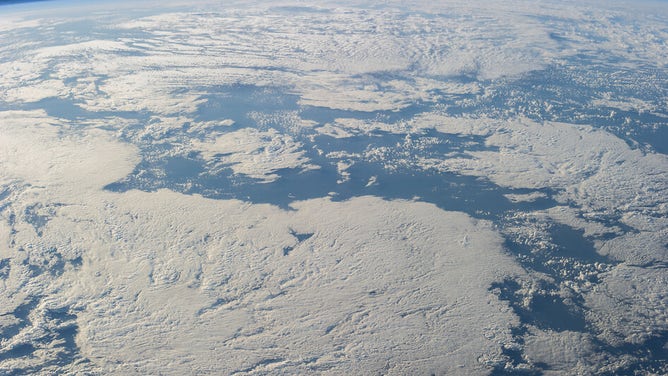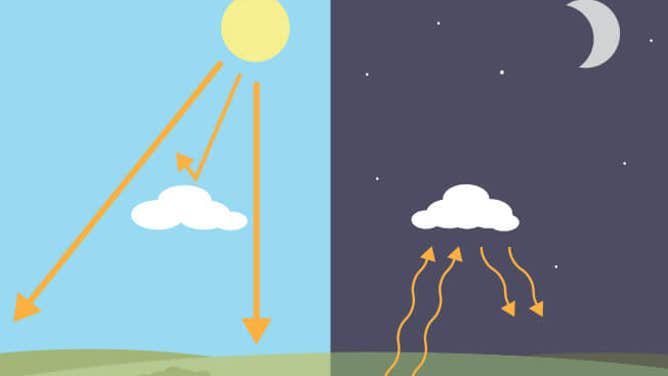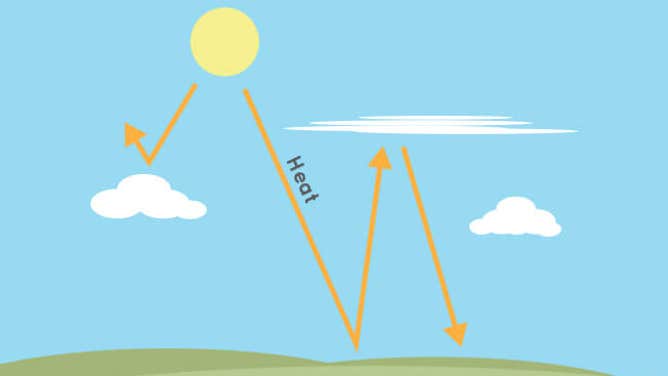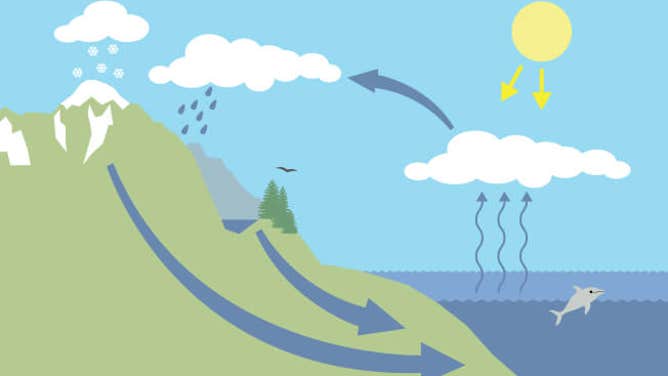How do clouds affect the climate on Earth?
About two-thirds of the Earth is covered by clouds at any given moment

A cloud-covered part of Earth, photographed by an Expedition 40 crew member on the International Space Station.
(NASA)
Clouds are a key component in the overall climate of Earth, contributing to both the warming and cooling of the planet.
According to NASA, about two-thirds of the Earth is covered by clouds at any given moment, so it seems pretty obvious that they would play a major role in our climate. After all, clouds regulate the amount of sunlight reaching the Earth’s surface.
On a cloudy day, for example, temperatures tend to be a little cooler than they would be if it were sunny. This is because the clouds are blocking a fair amount of the sun’s heat and energy from reaching the surface of the Earth.
But clouds can also keep temperatures warmer. Even on a cloudy day, some heat from the sun still penetrates through the clouds and reaches the Earth’s surface. At night, clouds can act as a blanket and trap that heat near the ground instead of it escaping freely into outer space.
This is why cloudy nights tend to be warmer than clear nights. On a clear night, the heat that reached the Earth’s surface during the day is lost into space because there are no clouds present to trap it near the ground.

During the day, clouds can make the temperature on Earth cooler by blocking heat from the sun. At night, clouds can make Earth's temperature warmer by trapping heat that came from the sun.
(NASA/JPL-Caltech)
The altitude of the clouds is also important to consider.
Low clouds within about a mile of the ground tend to cool the Earth’s surface more than warm it, according to NASA. These clouds are generally thicker, so they mostly reflect the sun’s heat back out to space. In turn, this cools the surface of the Earth.
Meanwhile, high clouds are the opposite and tend to warm the Earth’s surface more than cool it. These clouds are usually thin, so the sun’s energy can still pass through during the day, but then that heat gets trapped beneath those clouds at night. According to NASA, this results in a warmer surface of the Earth.

Wispy clouds high up in the atmosphere generally make an area warmer. Lower-altitude clouds tend to help an area cool off.
(Credit: NASA/JPL-Caltech)
When considering both low and high clouds, cooling has the upper hand.
"Right now, Earth’s surface is cooler with clouds than it would be without the clouds," NASA said.
Clouds also play an essential role in the Earth’s water cycle, providing an important link between rain and snow, oceans and lakes, and plants and animals. The water cycle is the path that water follows as it moves around the Earth in different states (liquid, solid and gas).

Clouds are an important part of the water cycle on Earth.
(NASA/JPL-Caltech)
Similar to how clouds affect the climate, the climate can also affect clouds. This is known as cloud-climate feedback, and it’s one of the most challenging research areas in climate science, according to NASA.
As the Earth’s climate warms, climate scientists predict there will be fewer clouds to cool it down, NASA noted. Therefore, we can’t rely on clouds alone to mitigate climate change.
Several NASA satellites are collecting information about clouds. One, called CloudSat, is trying to figure out the extent to which clouds contribute to climate change on Earth.

An artist’s illustration of NASA’s CloudSat spacecraft. CloudSat helps us understand how clouds affect Earth’s weather and climate.
(NASA/JPL)